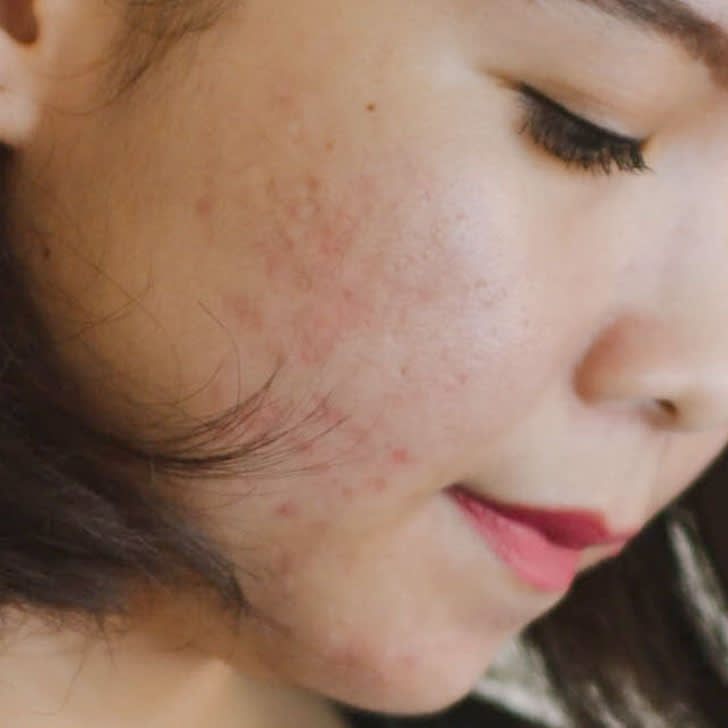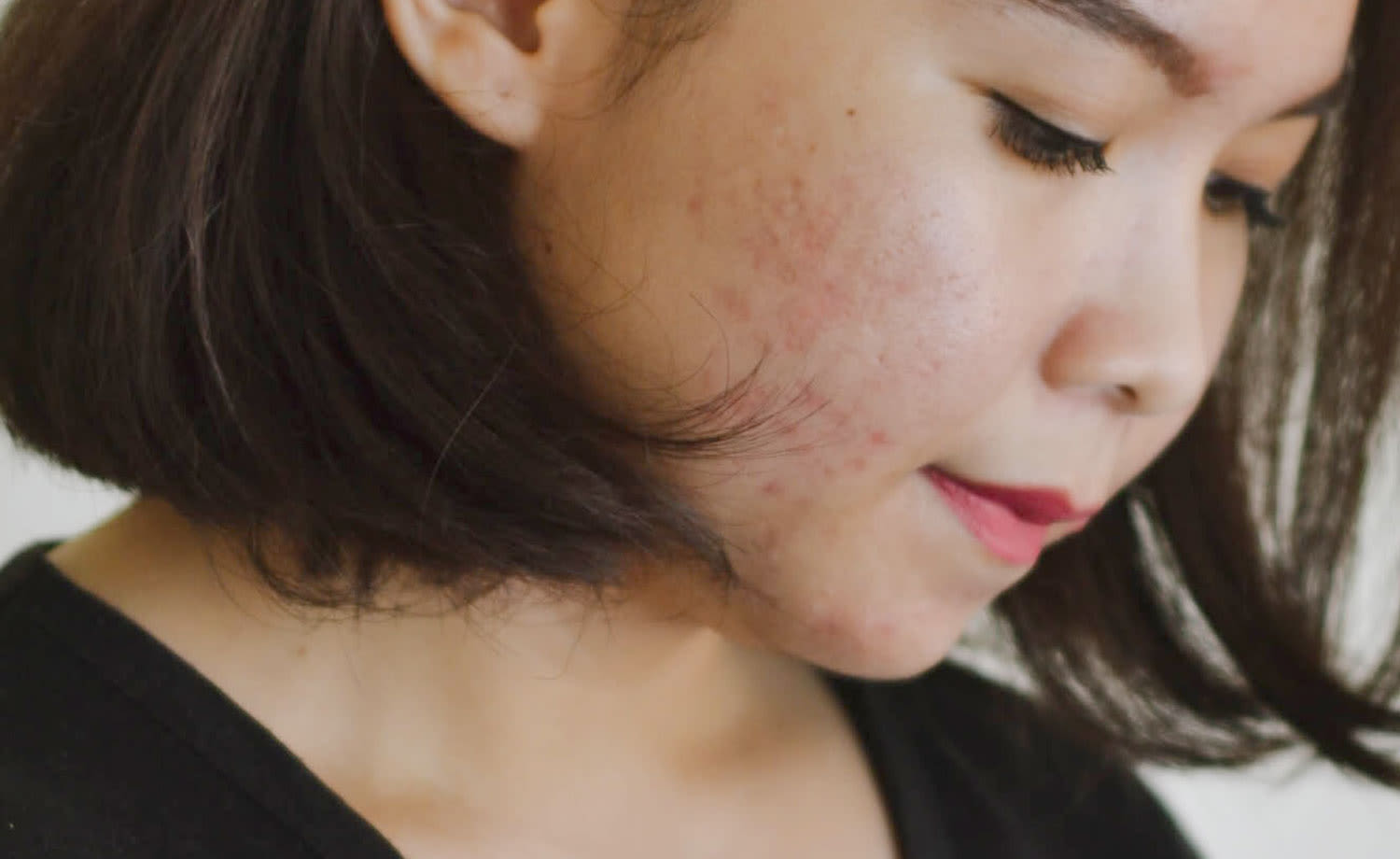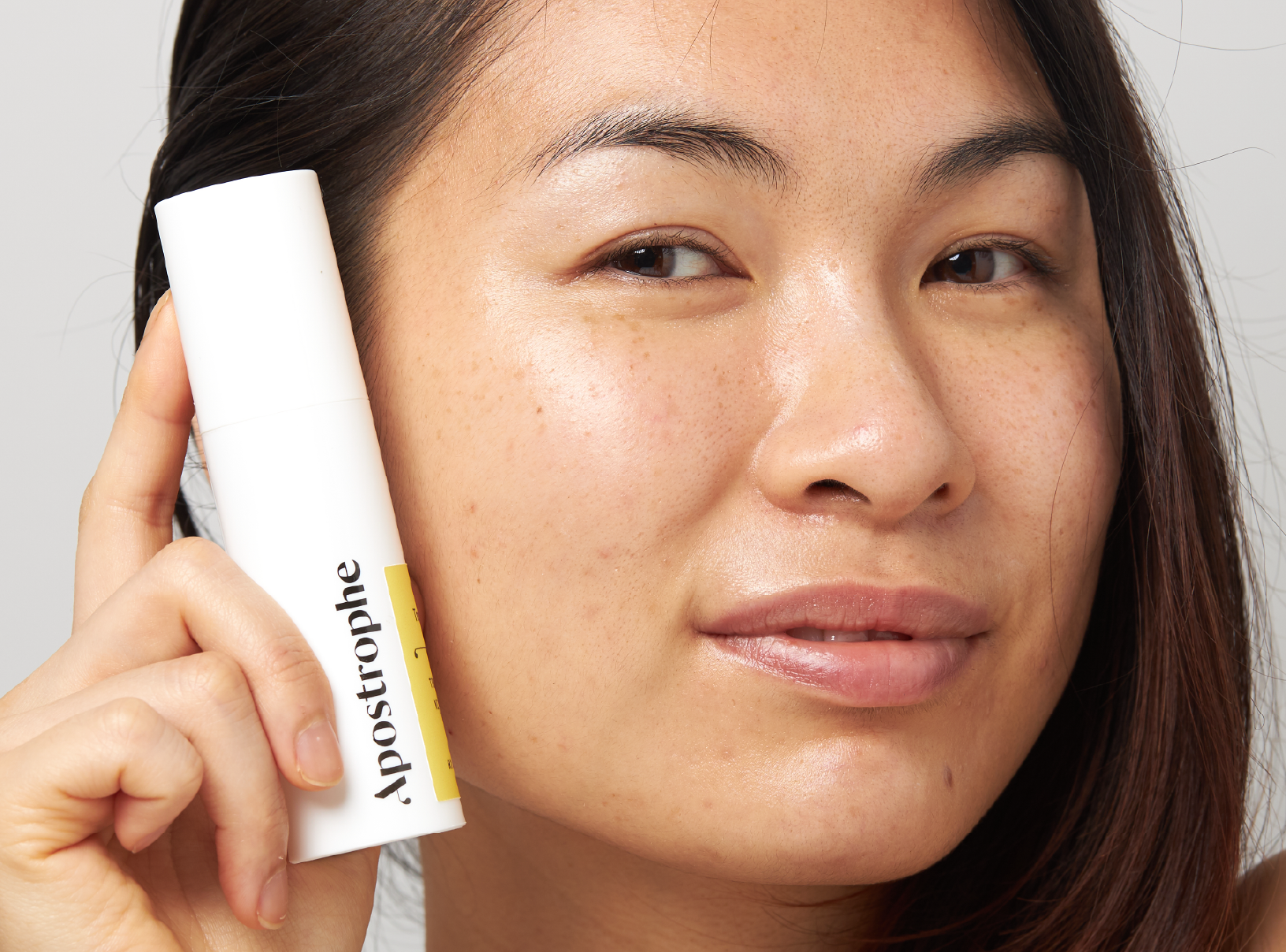Education
What You Need To Know About Hormonal Acne


SHARE
Education
What You Need To Know About Hormonal Acne
Medically reviewed by Aimee Paik, MD
Written by Apostrophe Team
Last updated 4/5/2024
Hormonal acne can affect people of all ages. Movies, TV shows, and books often use acne as a marker of puberty or a source of stress for our fair teenage hero. The narrative around acne is so strongly tied to our teenage years, many of us expect it to disappear on its own once we hit our twenties, only to be disappointed. On the other hand, others may have clear skin throughout high school and experience breakouts for the first time during college or beyond. Whatever the case may be, figuring out your acne can be annoying, painful, and expensive. But we do know one of the most common culprits of adult acne: hormones.
Do you have hormonal acne?
The American Academy of Dermatology reports that over 50% of women between the ages of 20-29 and over 25% of women between 40-49 are affected by acne. During puberty, hormonal acne is characterized by breakouts in your T-zone (the forehead, nose, chin, and cheeks). Pores there are easily clogged there because the T-zone tends to be the oiliest part of the face. As an adult, hormonal acne manifests along the jawline and the lower part of the face (the mix of hair follicles and oil glands in that area make it susceptible to changes in hormone levels). Inflammation is also a key indicator for adult hormonal acne. You may get painful and deep cysts that typically arrive a few days before your period along with shallower breakouts of whiteheads and clogged pores.
Ok – I have hormonal acne. How did this happen?
Researchers aren’t completely sure what triggers hormonal acne, but it is likely to be caused by multiple factors. Hormone levels naturally shift as we age, so simply getting older can cause changes that increase breakouts. Polycystic ovarian syndrome (PCOS) or the onset of menopause are also big hormonal changes that can bring about acne. Finally, factors like stress or diet can also play a role. A stressful time at work or getting too busy to come up with healthy meals (or both) can result in excess sebum protection from an increase in cortisol (more sebum = more zits).
What can I do about it?
The treatment for hormonal acne depends on the severity of your acne and the types of breakouts you are seeing. If you think lifestyle changes may be a contributing factor, take some time to de-stress (dermatologist Dr. Mamina Turegano recommends meditation!), or try to decrease the amount of refined sugar in your diet. Mild cases with blackheads, whiteheads, and clogged pores may be addressed with topical treatments like tretinoin or topical antibiotics like clindamycin. If your acne is moderate to severe, your dermatology provider may recommend oral treatments to address your acne from the inside, out. Oral antibiotics target inflammation to calm your skin and doctors often prescribe them in conjunction with topical medications for a one-two punch.
If these treatments just aren’t doing the trick, your dermatology provider may consider prescribing spironolactone to get to the root of the problem. Spironolactone is an oral medication that acts as an anti-androgen to counteract the effects of testosterone, which can increase oil production and trigger breakouts. Researchers have also found low-estrogen triphasic pills (birth control pills) to be effective at clearing skin. They function similarly to spironolactone and work by leveling out the hormone fluctuations that occur throughout the month. For more information and options, you can talk to your primary care doctor or OBGYN about birth control pills.
We know a little bit of knowledge can go a long way. If over-the-counter products aren’t banishing your breakouts, you can always connect with a dermatology team through Apostrophe to get your hands on prescription strength treatments and answers from the experts. Dealing with zits at any age is tough, but we try to make it easier!
Do you have a tried-and-true method of handling hormonal acne? Let us know on Twitter @hi_apostrophe!
Like what you just read? Sign up for our email list to get the scoop on skincare science delivered straight to your inbox.

Deep Dives
A dermatologist shares his thoughts on the recent studies about benzoyl peroxide and benzene.
Read More
Education
What is milia?
What is milia? Today, we’re jumping into one type of bump that you may have heard about most commonly in infants — milia.
Read More
Education
Best moisturizer for acne-prone skin
If you have combination acne-prone skin, figuring out which moisturizer is best for your skin might be tough. In this guide, we break down the best moisturizer for combination, acne-prone skin.
Read More
